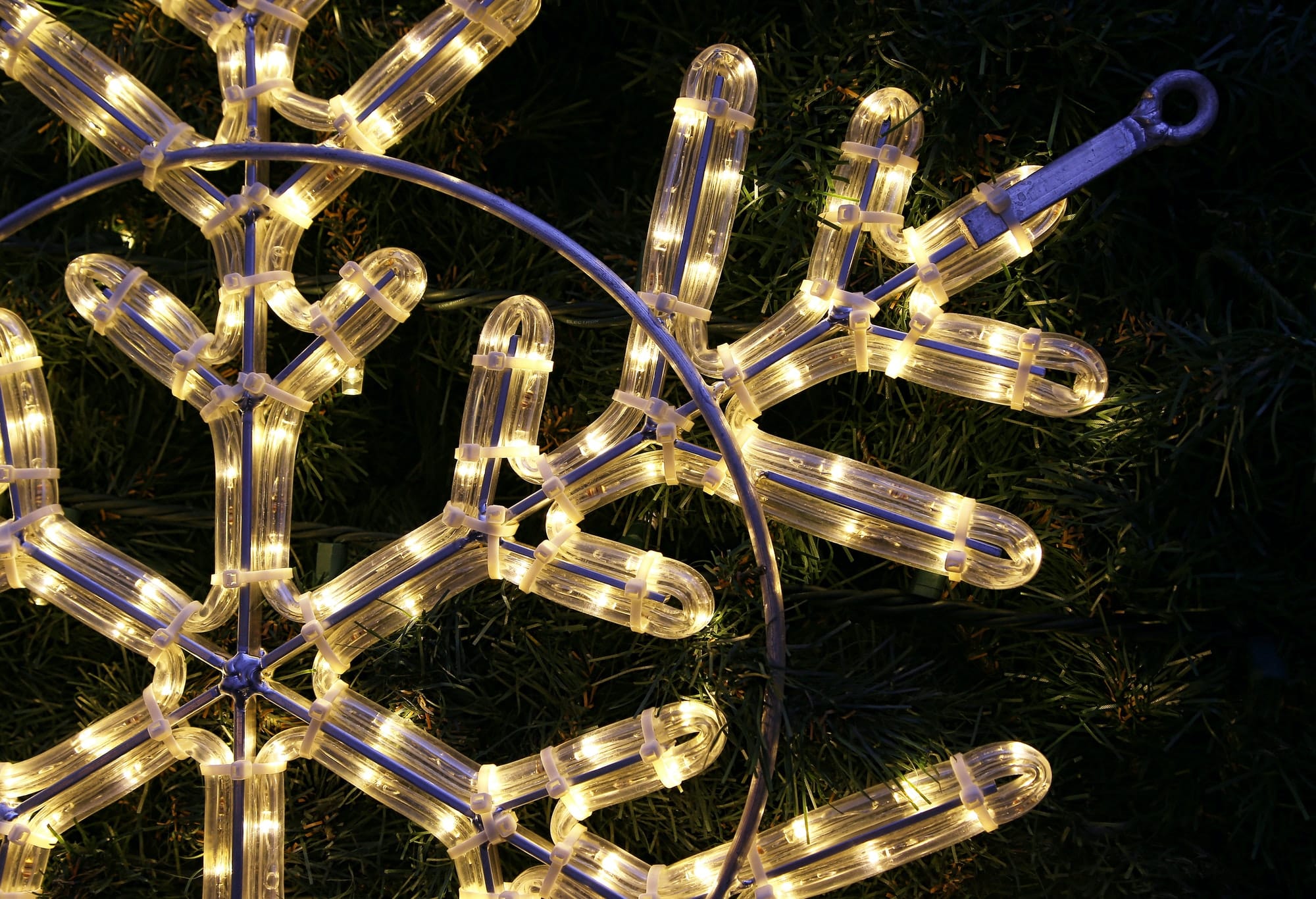LED lighting has revolutionized the way we illuminate our surroundings. You may be thinking, “But how does it actually work?” Well, let me break it down for you. In this article, we will explore the fascinating science behind LED lighting and unravel its secrets. We will delve into the intricate process of light emission, the role of semiconductor materials, and the conversion of energy in LEDs. We will also discuss the various types of LED structures and factors that affect their efficiency. By the end of this journey, you will have a comprehensive understanding of how LED lighting works and why it is the preferred choice for many due to its numerous advantages. Get ready to master the science behind LED lighting!
Key Takeaways
- LED lighting works through electroluminescence, where electrons jump between semiconductor layers and release energy as photons.
- The color of light emitted by an LED depends on the semiconductor materials used and their bandgap energy.
- Holes, which are positively charged carriers, play a crucial role in light generation and optimizing hole mobility enhances LED performance.
- LED structures have advanced over time, with developments such as flip-chip LEDs, organic LEDs, and micro-LEDs, offering improved thermal management, flexibility, vibrant colors, and higher efficiency.
Light Emission Process
In studying the science behind LED lighting, I am fascinated by the intricate light emission process. LED, or Light Emitting Diode, works by a fascinating light emission mechanism called electroluminescence. This process involves the generation of photons, which are the basic units of light. Inside an LED, there are two semiconductor layers – one with an excess of electrons and the other with a deficit. When an electric current is applied, the electrons from the excess layer jump to the deficit layer, releasing energy in the form of photons. The color of the emitted light depends on the materials used in the semiconductor layers. This precise and controlled emission process allows LEDs to produce efficient and high-quality light, making them an ideal choice for various lighting applications.
Semiconductor Materials Used
For LED lighting to function, specific semiconductor materials are used. These materials have unique properties that allow them to emit light when subjected to an electric current. Here are four key points about the semiconductor materials used in LED lighting:
-
Bandgap Energy: Semiconductor materials have a specific energy gap between their valence and conduction bands, known as the bandgap energy. This energy determines the color of light emitted by the LED.
-
Doping Techniques: To modify the properties of the semiconductor materials, doping techniques are employed. This involves adding impurities, such as phosphorus or gallium, to alter the conductivity and bandgap energy of the material.
-
Gallium Nitride (GaN): GaN is a commonly used semiconductor material in LEDs. It has a wide bandgap energy, allowing it to emit blue or green light.
-
Aluminum Gallium Indium Phosphide (AlGaInP): This semiconductor material is often used to produce red, orange, and yellow LEDs. By manipulating the composition of AlGaInP, different colors can be achieved.
These carefully chosen semiconductor materials and precise doping techniques are crucial for the efficient operation and wide range of colors available in LED lighting.
Role of Electrons and Holes
When it comes to LED lighting, understanding the role of electrons and holes is crucial. Electrons are responsible for the movement of electric current within the LED, while holes contribute to the conductivity of the material. By harnessing the movement of electrons and the presence of holes, LEDs are able to emit light efficiently and effectively.
Electron Movement Explained
One key aspect of LED lighting is the movement of electrons and holes. Understanding the behavior of electrons and their charge movement is crucial to grasp how LEDs function. Here are four important points to consider:
- Electrons are negatively charged particles that orbit the nucleus of an atom.
- In LED lighting, electrons move from a higher energy level to a lower energy level within a semiconductor material.
- When an electron moves from a higher energy level, it leaves behind a “hole,” which is a positively charged region.
- The movement of electrons and holes across the semiconductor creates an electric current, resulting in the emission of light.
Importance of Hole Conductivity
To understand the role of electrons and holes in LED lighting, it is essential to recognize the significance of hole conductivity. In LED devices, holes are positively charged carriers that play a crucial role in the generation of light. Hole conductivity refers to the ability of these holes to move and carry electric charge through a material. The mobility of holes determines how efficiently they can transport charge within the LED structure. This is particularly important during the process of hole injection, where electrons and holes are injected into different regions of the LED to create recombination and light emission. By optimizing hole mobility and injection, LED manufacturers can enhance the overall performance and efficiency of LED devices, resulting in brighter and more energy-efficient lighting solutions.
Energy Conversion in LEDs
LED lighting operates through the process of energy conversion, transforming electrical energy into light. This conversion process is what makes LEDs highly efficient compared to traditional lighting sources. Here are four key aspects of energy conversion in LEDs:
-
Energy efficiency: LEDs are known for their high energy efficiency. They can convert a large percentage of the electrical energy they receive into light, minimizing energy wastage and reducing electricity consumption.
-
Color rendering: LEDs offer excellent color rendering capabilities, meaning they can accurately reproduce colors. This is achieved through precise control of the energy conversion process, allowing for the production of light with a high color rendering index (CRI).
-
Heat generation: Energy conversion in LEDs is not 100% efficient, and a small percentage of the electrical energy is converted into heat. However, compared to traditional lighting sources like incandescent bulbs, LEDs generate significantly less heat, making them safer and more efficient.
-
Directional lighting: LEDs are inherently directional, meaning they emit light in a specific direction. This reduces the need for additional reflectors or diffusers, further improving the energy conversion efficiency of LED lighting systems.
Understanding the energy conversion process in LEDs is crucial for maximizing their benefits, such as energy efficiency and high-quality light output.
Types of LED Structures
When it comes to LED structures, there are a few common types that are widely used in lighting applications. These include the basic LED package, surface-mounted LEDs, and chip-on-board LEDs. However, advancements in LED technology have led to the development of more complex structures such as flip-chip LEDs and organic LEDs, which offer improved performance and versatility. Let’s explore these different LED structures and how they contribute to the efficiency and functionality of LED lighting systems.
Common LED Structures
I frequently use different types of LED structures in my research on the science behind LED lighting. Understanding the common LED structures is essential for mastering the LED manufacturing process and optimizing LED heat management. Here are four types of LED structures commonly used in the industry:
- Vertical LED Structure: This structure allows for better heat dissipation and improves overall performance.
- Flip-Chip LED Structure: In this structure, the LED chip is directly bonded to the substrate, resulting in improved thermal management and electrical performance.
- Chip-On-Board (COB) LED Structure: Multiple LED chips are packaged closely together on a single substrate, providing high light output and better color consistency.
- Surface-Mount Device (SMD) LED Structure: SMD LEDs are mounted directly onto a circuit board, making them highly versatile and easy to install.
Advancements in LED Structures
The evolution of LED structures has revolutionized the field of lighting, enhancing efficiency and expanding possibilities. Advancements in LED structures have paved the way for exciting future developments in the world of lighting technology. One major advancement is the development of micro-LEDs, which are smaller and more efficient than traditional LEDs. These tiny structures have the potential to be used in a wide range of applications, including high-resolution displays and wearable devices. Another significant advancement is the introduction of organic LEDs (OLEDs), which offer flexibility and the ability to produce vibrant colors. OLEDs have already made their way into the market, with televisions and smartphones utilizing this technology. As research continues, we can expect even more exciting advancements in LED structures that will further enhance the efficiency, versatility, and overall performance of LED lighting.
Factors Affecting LED Efficiency
One key factor that affects LED efficiency is the operating temperature. Maintaining the optimal temperature range is crucial for maximizing the performance and lifespan of LEDs. Here are four important factors to consider:
-
Thermal Management: Efficient heat dissipation is essential for LED operation. Heat can degrade the performance of LEDs and reduce their lifespan. Proper thermal management techniques, such as heat sinks and thermal pads, help dissipate heat effectively, ensuring better efficiency.
-
Current Control: LED efficiency is influenced by the current flowing through it. Overdriving the LED can result in increased heat generation and reduced efficiency. Implementing current control mechanisms, such as resistors or constant-current drivers, helps maintain the optimal current levels for improved efficiency.
-
Color Temperature Control: LEDs can emit light in different color temperatures. The efficiency of LEDs can vary based on the desired color temperature. By controlling the color temperature, the efficiency of LEDs can be optimized for specific applications.
-
Optical Design: The design of the LED package and optics can impact its efficiency. Factors like lens materials, reflectors, and light distribution play a crucial role in maximizing the light output and directing it to the desired area.
Considering these factors and implementing appropriate measures can significantly enhance the efficiency of LED lighting systems.
Advantages of LED Lighting
When considering the factors affecting LED efficiency, it becomes apparent that LED lighting offers numerous advantages. One of the key advantages is its energy efficiency. LED lights consume significantly less energy compared to traditional incandescent bulbs, making them more environmentally friendly and cost-effective in the long run. LED lights also have a much longer lifespan than other lighting options, such as fluorescent or halogen bulbs. This longevity is due to the absence of a filament, which is often the first component to fail in traditional bulbs. LED lights can last up to 50,000 hours or more, reducing the need for frequent replacements and saving on maintenance costs. With their energy efficiency and longevity, LED lights are a smart choice for those seeking sustainable and durable lighting solutions.




